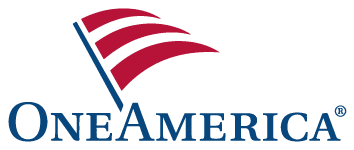What if one of the most useful tools for your long-term strategy has been sitting quietly in your benefits package all along?
When open enrollment season begins, millions of Americans start reviewing health plan options, often focusing on premiums and deductibles. But buried in those choices lies something many professionals describe as the “hidden gem” of retirement strategy, the health savings account, or HSA.
By the end of 2024, approximately 59 million Americans held an HSA, according to a joint survey by Devenir and the American Bankers Association’s Health Savings Account Council. Yet only about 20% of account holders invested their balances last year, even though two-thirds of employers offered the option. That means many individuals may be missing out on one of the more tax-advantaged savings opportunities available (1).
The Untapped Triple-Tax Advantage
An HSA is uniquely valuable because it offers three layers of potential tax savings:
- Contributions may be tax-deductible
- Growth and investment gains can be tax-free
- Withdrawals for qualified medical expenses are tax-free
Few other accounts offer this combination. Building a “six-figure HSA” alongside Roth and after-tax savings could form what professionals describe as a more comprehensive approach to long-term strategy (1).
For 2026, contribution limits are set to rise again, $4,400 for individuals and $8,750 for families, according to the IRS (1). And with health care costs continuing to climb, a 65-year-old retiring in 2025 can expect to spend roughly $172,500 on medical expenses throughout retirement, the case for considering an investment approach within your HSA has become increasingly strong (1).
Why So Few Invest?
Despite the clear benefits, only a fraction of participants currently invest their HSA funds. According to the Plan Sponsor Council of America’s 2025 survey, one barrier may be minimum balance requirements: roughly three-quarters of employers required at least $1,000 before participants could begin investing (1).
For many families using their HSAs to pay for current-year medical costs, maintaining that balance can be difficult. Industry professionals note that many people need to access their funds for ongoing expenses, which limits their ability to let those dollars compound over time (1).
A Long-Term Lens on Health
The renewed focus on HSAs comes amid broader shifts in healthcare and tax policy. A federal bill enacted in July 2025 expanded access by making more marketplace health plans HSA-eligible (1). At the same time, rising retirement healthcare costs continue to encourage savers to look for tax-efficient ways to prepare.
When used strategically, investing a portion of your HSA may help offset future medical expenses — from routine prescriptions to Medicare premiums — while helping preserve other retirement assets for long-term income needs. However, investing involves risk, including the possible loss of principal.
Looking Ahead
As you review your benefits this year, it’s worth asking: Are you treating your HSA like a spending account or as part of your broader long-term strategy?
With contribution limits increasing, healthcare costs rising, and access expanding, the HSA continues to stand out as a quiet but potentially powerful ally in retirement readiness.
If you’d like to explore how an HSA strategy could complement your broader retirement approach, consider scheduling a complimentary meeting with us to discuss how it might fit your goals.
Source:
(1) Dore, Kate, CFP®, EA. “This Investing Move Is the ‘Holy Grail of Retirement Planning,’ Advisor Says.” CNBC, 28 Oct. 2025, www.cnbc.com/2025/10/28/investing-your-health-savings-account-balance.html
Investing involves risk, including the possible loss of principal. Investment returns and principal value will fluctuate, and an investor’s shares, when redeemed, may be worth more or less than their original cost. Past performance does not guarantee or indicate future results.
Health Savings Accounts (HSAs) are available to individuals who are enrolled in a qualified high-deductible health plan (HDHP). Contributions, earnings, and withdrawals used for qualified medical expenses are generally tax-free. Non-qualified withdrawals are subject to income tax and, if taken before age 65, may be subject to an additional penalty. Tax laws are subject to change, and their impact may vary based on individual circumstances. Please consult a tax professional for specific advice.
This material is for informational purposes only and is not intended to provide specific tax, legal, or investment advice. Financial and insurance professionals do not provide legal or tax advice. Please consult your attorney or tax professional regarding your personal situation.







